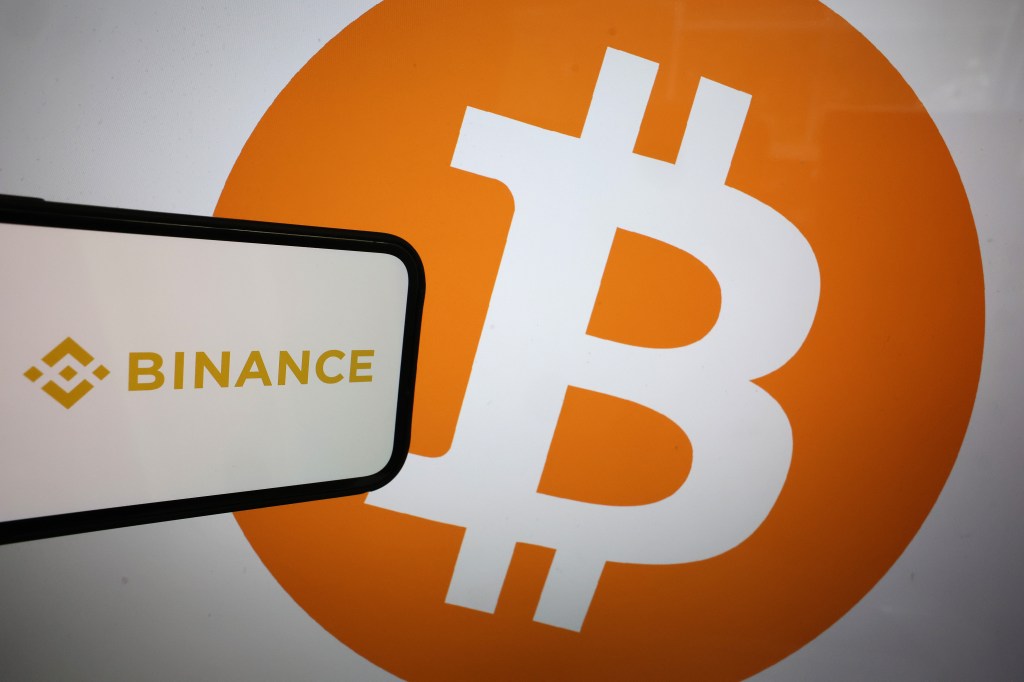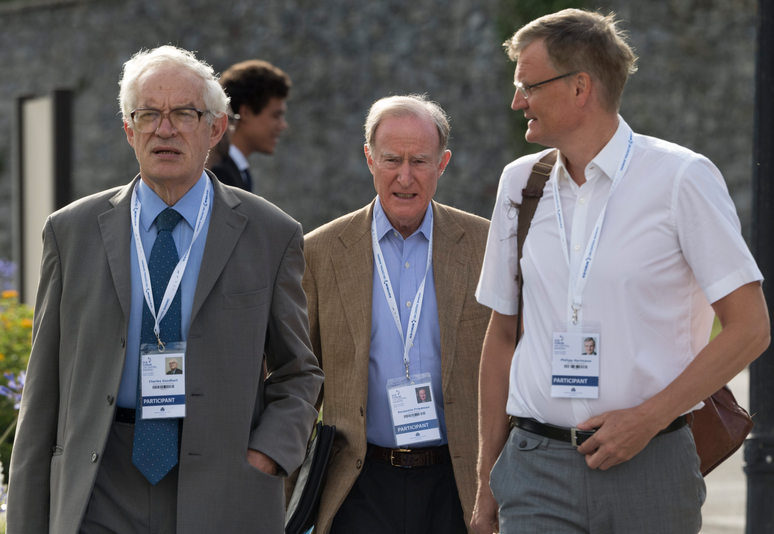14 December, 2023 by Sam Fleming
This is part of a series, “Economists Exchange”, featuring conversations between top FT commentators and leading economists
Back in the midst of the lockdown-induced slump, the British economist Charles Goodhart made a surprising prediction. With annual UK price growth running at less than 1 per cent, he warned that inflation was on its way back — and on a lasting basis.
The forecast, issued with co-author Manoj Pradhan in the 2020 book The Great Demographic Reversal, was based on a theory that many of the forces that have been holding inflation on the floor in recent decades are set to dissipate.
A glut of cheap labour, driven in part by China’s entry into the world trading system, would give way to labour shortages as societies age, contributing to higher price growth. Upward pressures on prices and interest rates would be compounded by lower savings and rising spending by ageing populations, while fiscal pressures mount as healthcare demands increase.
Goodhart’s focus was on longer-term inflationary trends, but the book was, needless to say, perfectly-timed given the history of the past three years, as inflation soared towards and above 10 per cent. The theories in the book are by no means uncontested among economists — not least given that Japan’s rapidly ageing society has lived with paltry inflation for decades.
But few felt comfortable ignoring them given their provenance. An emeritus professor at London School of Economics’ Financial Markets Group, Goodhart is one of the country’s most eminent economists.
He helped shape Bank of England policy in the 1980s, and was one of the first external members of the newly formed Monetary Policy Committee when the BoE was made independent by Tony Blair’s government. Long before the banking crash of 2007-09, Goodhart was speaking about the importance of financial stability matters.
Now in his late eighties, Goodhart spoke to the FT about the need for central banks to better understand the drivers of the recent price surge — arguing they need to upgrade their ways of communicating about inflationary risks that lie ahead. With growth data pointing to a sluggish outlook, Goodhart warned central banks face a “very difficult period” ahead. He also had some dark warnings about the mounting risk of fiscal crises in some of the world’s biggest economies.
Sam Fleming: Central bankers were largely caught napping by the inflationary upsurge that began three years ago. The case in their defence is that inflation was caused by a series of supply shocks that they could hardly have predicted. What’s your view?
Charles Goodhart: Well, a lot of that is actually correct. But I think that they go too far and are now trying to argue that they were completely blameless, that everything was due to a series of unforeseeable shocks, rather than that they didn’t realise there was going to be a change in the availability of labour, which was going to mean that the inflation was not transitory.
I would particularly note that in Bank of England policymaker Jonathan Haskel’s excellent speech he says that they had to wait until December 2021 because they feared that there would be a massive increase in unemployment when the workers came flooding back after the furlough. And Federal Reserve chair Jay Powell makes much the same argument.
They didn’t see that Covid had itself reduced the likelihood of a large return of labour. And they didn’t see that the underlying trend was strongly against a significant increase in the labour force.
SF: We’re talking about late 2021.
CG: Yes — the decisions they made in the summer of 2021 that they could hold interest rates at very low levels. It was in the second half of 2021 that inflation really began to get going quite rapidly and well before the Ukraine attack by Russia.
SF: Haskel’s work on this uses the modelling that former Fed chair Ben Bernanke and former IMF chief economist Olivier Blanchard developed — transposing it to the UK. It says there was an initial burst of inflation during the spring and summer of 2021, and that was from energy prices and shortages, and that the labour story kind of picks up later. And so it was reasonable of them to say this is transitory.
CG: I think that Blanchard and Bernanke, and Haskel and his colleagues overstate the supply side shortage argument. It’s my guess that quite a lot of what they attribute to shortages actually is much more attributable to the fiscal expansions that were occurring at more or less the same time.
SF: But couldn’t you look at what’s happened to at least headline rates of inflation recently, and the very sharp declines we’re now seeing, especially in the euro area, and say maybe this story of very large supply shocks is now subsiding.
CG: Well, I think that I would respond to that by saying that unit labour cost inflation and services inflation are still significantly above the target level.
There’s absolutely no doubt that inflation got exaggerated by the supply shocks, oil and particularly gas in Europe and the UK, which America didn’t suffer to anything like the same extent. So when that reverses, you’re bound to get quite a sharp decline.
My expectation is that 2024 will look very nice because we’re having a reversal of the upsurge in energy prices
But the underlying core and labour market inflation has not yet got down to the target level. My expectation is that 2024 will look very nice because we’re having a reversal of the upsurge in energy prices. And if, as I think is quite possible, there is some kind of truce in the Ukraine war, energy prices might come down even further. And I think 2024 will look good. I think the central banks will declare victory and at some point will start lowering nominal interest rates.
My concern is the catch-up argument. The desire of households to restore living standards to what they were earlier, will mean that particularly if interest rates do go down, the labour market will remain tighter than is consistent with underlying target inflation. So 2025 will actually see some reversal, with inflation going up again, maybe even towards the end of 2024.
SF: Haskel said that his estimate of the impact of catch-up was a little over one point on annual wage growth and about half a per cent on price inflation through the second quarter of 2023. You would say that is an understatement?
CG: Yes. The concern about catch-up is cumulative. It’s not just ‘did we misestimate inflation now?’ It’s a question of ‘how far have our living standards fallen, compared to a reasonably recent past, which we thought in some sense was normal?’ So it’s a cumulative decline in living standards that I think is crucial.
You’ve only got to look at what the striking doctors and nurses, railwaymen and so on say now, to realise it’s cumulative. Moreover, UK real living standards have been further reduced by the fact that effective tax rates have been increased in the meantime by keeping the thresholds constant.
So if you take real post-tax living standards, many, particularly in the public sector, are suffering a considerable cumulative reduction in their standard of living. I would argue that the actual variable that [Haskel et al] use to model catch-up is not, in my view, sufficient or satisfactory.
There is a need for people who are not in central banks to challenge and redo models which are being constructed by those who have been in central banks. The challenge needs to come from the outside. Not that the insiders are wrong, it’s just that the insider is quite happy to stop at a particular point which shows central banks in the best light.
We’re in for a fiscal crisis down the road. We don’t know how to solve it.
SF: Would you therefore agree with those who advocate for very persistently tight monetary policy, indeed through next year?
CG: It’s a very difficult period for central banks. If headline inflation gets down to or below 2 per cent, as is perfectly possible during the course of 2024, and unemployment is rising, and you have got general elections coming along so politicians are unhappy if you don’t cut interest rates, I think the pressure on central banks during 2024 to cut nominal interest rates will be overwhelming.
And I would understand entirely if they do so. I think my only comment would be that if and when — and I think it’s a question of when rather than if — inflation then starts rising again towards the very end of 2024 or into 2025, as the reduction in energy prices itself falls out of the headline CPI, they’ve got to be ready to reverse tracks again.
There is a need for people who are not in central banks to challenge and redo models which are being constructed by those who have been in central banks
I don’t see them refusing to lower nominal interest rates with headline inflation at or below target and unemployment rising. It just won’t happen.
SF: We already see headline inflation in the euro area between 2 and 3 per cent, so not far from target.
CG: Isabel Schnabel of the ECB, in her recent commentary, is clearly signalling that not only are we now at the top, but some reduction in nominal interest rates will inevitably, I think, be on the cards for some time in 2024 — very likely in the first half.
SF: I wanted to discuss your book with Manoj Pradhan, which was published in 2020. It said that inflation was likely coming back, but the reasons you were thinking about were longer-term themes, including the role of China and ageing societies, and a lack of labour supply. To what extent do you see any of those longer-term themes already visible in the inflation we’ve seen over the past two, three years?
CG: I have to confess that we were quite lucky in our prognostications, because what we didn’t see was the effect of Covid in particular on the labour force. The effects of the great early resignation, the increase in the number who had long-term illness, long Covid, and during the Covid years the fall-off in migration.
Migration has more recently increased much more than we had expected, and I think that that’s undoubtedly one of the factors that are holding down wages.
I would pay more attention to asset prices
If politics in the world, not just the UK, but also the US and indeed in Europe, particularly with the elections in the Netherlands, triggers an effective reduction in total inward migration, that will be another longer-term force bringing about tightness in the labour markets, and therefore the tendency for inflationary pressures to increase.
SF: In the book you argue that the cheap goods produced by China and its vast workforce in recent decades played a larger role than central bankers’ expertise in keeping inflation low. Now China’s working age population is in steady decline. We’re also in this era of friend-shoring and geopolitical tension. Do you again, already see some of these playing out in the numbers we’re seeing today?
CG: Yes, but of course there have been so many dislocations. During the three decades up to 2020, you saw sustained periods where the prices of core goods in the US on average tended to fall by about 1 per cent per annum while the prices of core services tended to rise about 3 per cent. And much of that persistent trend decline in goods prices was due to cheap stuff coming out of China. If we’re going to get less of that, clearly the downward pressure on goods prices will be less.
SF: People cite Japan as an example where you have an ageing society coexisting with very low inflation for a long time. How do you take on that critique?
CG: The critique about Japan we answer by saying that those who criticise us largely do so on the basis of looking at Japan as if it was a closed economy. Japan was growing old at exactly the same time, in those years, 1990 to 2020, when the rest of the world and particularly China, was swimming in relatively available, effective and quite cheap labour. A lot of the Japanese firms benefited from that by offshoring to China. So they had the same world disinflationary forces as the rest of us did, and that was the dominant factor.
SF: Where does this leave us on the debate on the natural rate of interest over the longer term?
CG: This is one of the most contentious topics. The mainstream analysis still argues that real and nominal interest rates will go down, back to very low levels. And we, on the other hand, argue that because of a shortage of sufficient personal savings, and the fiscal problems not enabling the government to step in with sufficiently good pensions, will actually mean that the government has to support, particularly the incapacitated, to prevent them becoming destitute in effect. And the fiscal costs will be enormous, particularly of looking after the old and incapacitated in their care homes.
I would pay more attention to asset prices. And if the monetary aggregates were behaving in a very unusual manner, as they are at the moment, I would actually seek to question myself about why that was happening
We’re in for a fiscal crisis down the road. We don’t know how to solve it. And politicians always say ‘we know what we should do, we don’t know how to get re-elected if we do it.’ It’s difficult given the other problems that we have — climate and defence expenditures. Expenditures will have to go up, and how are you going to finance that? Trying to do it by borrowing will simply overburden the public sector debt market and lead at some stage to a crisis only too reminiscent of what happened in this country in September 2022 [with then Chancellor Kwasi Kwarteng’s “mini” Budget].
SF: At what point do you see this actually beginning to manifest itself in debt markets?
CG: I have no idea. You know that something is unsustainable but you don’t know when the dam will burst. In macroeconomics things can go on pretty much as normal, because that is what people have come to expect, and then suddenly something happens. It’s never possible to set out what the trigger will be, and everything goes pear-shaped.
And one of the great problems that we face at the moment is this is just as likely to happen in the US as anywhere else. And with the US, being the most important centrepiece of the world’s economy, what would happen if the Treasury bond market did the same kind of thing as happened in the UK?
Undoubtedly the Fed would have to step in, but that would reverse quantitative tightening of monetary policy. And then the question would arise under those circumstances, would monetary policy become fiscally dominated? And if monetary policy was fiscally dominated, what would that do to inflation, and how long would that fiscal domination enable the system to go on working reasonably effectively?
SF: Back on the question of central banks and their response to inflation, one of the outcomes of the inflationary outburst is a questioning of the central bankers’ forecasting methods. What changes, if any, would you be recommending if you were advising Ben Bernanke on his forthcoming review commissioned by the Court of the Bank of England?
CG: I would certainly start by junking rational expectations. When nobody knows the future and when there is no clear certainty about what the correct model is, it’s not clear what is rational anyhow. And in practice, people don’t know models, and the ordinary person tends to extrapolate the past rather than apply the same kind of forecasts that world trade and macroeconomists apply.
Next I would pay more attention to asset prices. And if the monetary aggregates were behaving in a very unusual manner, as they are at the moment, I think I would actually seek to question myself about why that was happening, and what were the implications. Even if you came to the decision that the implications were very small.
And third, and perhaps most important, I wouldn’t go for a single point forecast, because that is used by recipients to reduce their uncertainty in a situation where the uncertainty is inherent. And it’s actually wrong for central banks to pretend, or appear to pretend, that they know the future that well.
Instead, I would much rather they used a process of scenarios. There always ought to be scenarios of an even number, because if you had scenarios of an odd number, the recipients will always pick the middle scenario and assume that that is the point forecast on which they can rely.
SF: So if you are Ben Bernanke and one of your recommendations is to work with scenarios, what would those scenarios look like, how many do you need? Markets will still coalesce around a belief in one of the scenarios as being the main one.
CG: One of the scenarios that I would actually like to see considered at the moment would be what would happen if the Ukraine war came to an end. Now, that’s, if you like, a good scenario.
Another scenario that I would want to see would be what would happen if the Middle East conflict worsened, and rather than energy prices going down, they went up quite sharply. And again, you know, both of those are perfectly feasible outcomes.
You only need to look at some of the differences of views of the members of the MPC to realise there is less groupthink in the Bank of England than is probably in any other major central bank
I’d be quite happy to have another couple of scenarios. One would be what if the relatively minor increase in unemployment led to a significant reduction in wage demands, and then in unit labour costs.
And on the other side, what would happen if it didn’t? If the cumulative reduction in living standards meant that the increase in unemployment that central banks were prepared to accept was not sufficient to bring about a decrease in unit labour costs back to the kind of level consistent with target? So I’d have good and bad global [scenarios] and I’d have good and bad labour market outcomes.
SF: And no central forecast as such.
CG: No. And were I asked which of these scenarios do you think more likely, I would turn around and say your estimate is about as good as mine. Probably true, too.
I regard the turbulence of SVB and the others as being a failure of supervision, not of regulation.
SF: Do you see any role in all this for the equivalent of the Fed’s “dot plot” when it comes to the policy rate expectations of the various policymakers?
CG: Not really. In a sense, you see, we’ve already got our dot plots in the UK because we’ve got the fact that the individual members of the Monetary Policy Committee, can and do come to very different views about what should be done, and that is published.
With the dot plots is this what they would like to happen? What they think will happen? Do you estimate future interest rates depending on how you think your colleagues are going to vote or do you estimate the future interest rates on what you think ought to happen? Exactly what do they represent? It’s not really clear.
One of the areas where I do strongly defend the Bank is the argument about groupthink. You only need to look at some of the differences of views of the members of the MPC to realise there is less groupthink in the Bank of England than is probably in any other major central bank.
When I was on the MPC myself, any central bank which had Willem Buiter as a member could not be accused of groupthink because he was a one-man anti-groupthink.
SF: You wrote earlier this year that the long period of lax monetary policy had created increased systemic risks. The context for that was the turmoil around Silicon Valley Bank, et al. We did have that period of turmoil, but despite the very sharp tightening of monetary policy, we haven’t seen a major financial crisis. What messages do you take from that episode now that it seems at least to have passed for the time being?
CG: You’ve got to distinguish between the US and Europe and the UK. I regard the turbulence of SVB and the others as being a failure of supervision, not of regulation. In other words, the regulations were there. And indeed many of the things that were going wrong with SVB had been well pointed out in advance. The problem was that the supervisors, for reasons that I’m not entirely sure I understand, were not able or not prepared to respond quickly and strongly enough.
I would like to see enhanced penalties, financial penalties, being applied to those who take the decisions when they, admittedly, with the benefit of hindsight, were clearly reckless
So I think that in the US, the question is how do you make supervision more effective? I don’t think the same argument holds, or at least not with anything like the same force, in the UK and in Europe.
SF: We’re far enough down the road from the regulatory response to the great financial crisis to assess its efficacy. Where are the areas where you would see the most room for further reform, if any?
CG: My concern has always been that one of the great drivers of moral hazard has been the limited liability of those who take the major decisions. And I would like to see enhanced penalties, financial penalties, being applied to those who take the decisions when they, admittedly, with the benefit of hindsight, were clearly reckless.
The problem is that if you’re going to increase penalties, which I would like to see, bankruptcy can occur for reasons well beyond the ability of management to address the issues. The example I often make is a massive earthquake bringing Tokyo to collapse. That would make most of the Japanese banks insolvent immediately. And you can’t do anything about that.
So if you’re going to impose greater penalties on management when you do get bankruptcies, I would want to have some kind of quasi court of appeal where they can claim that the imposition of such extra penalties would be unfair because of x, y and z.
SF: Do you agree with the House of Lords that there are institutional issues at the BoE to do with its independence from the Treasury? Are there reforms that you would be making right now?
CG: I do feel that there is some grounds for concern that the Treasury can advise for the appointment of one of themselves to a senior position, as a deputy governor in the bank. I think most of the people from the Treasury have been excellent. But even so, the image that gives is one of Treasury control of the bank.
I would seriously consider whether the senior appointments should be addressed in some other way, perhaps, for example, by a committee of permanent secretaries of the government ministries, so it’s not only the Treasury. Or alternatively, one could think of some other way of having a committee for senior appointments to the bank. There are some reasonable grounds for concern about the extent of Treasury domination of senior appointments.
The above transcript has been edited for brevity and clarity
© The Financial Times Limited 2023. All Rights Reserved.
FT and Financial Times are trademarks of the Financial Times
Ltd. Not to be redistributed, copied or modified in any way.
















